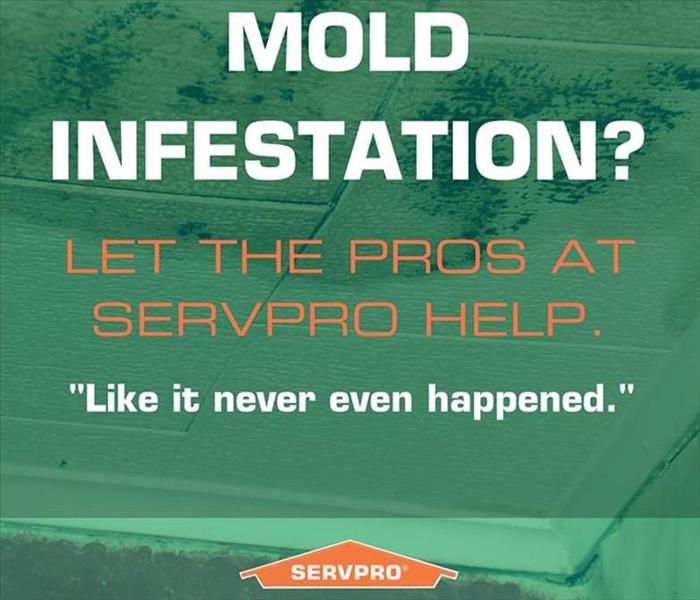How to Prevent Mold
11/8/2016 (Permalink)
You had a house flood and thought you did a pretty good clean up job (pat yourself on the back), until one day you notice a little something over in the corner under the carpet slowly creeping up the wall. Panic sets in and you start pacing thinking to yourself, “How did this happen. What could I have done to prevent this?” Well we have the answers and some simple tips to help you prevent mold.
- Identify problem areas in your home and correct them. You can't mold-proof your home, but you can make it mold-resistant. Check your house for areas of concern and face them head on. It might cost money up front but it will save you money down the road. Pull up that carpet and install mold proofing products, find that water leak and fix it so it doesn’t creep inside the house, or repair that broken rain gutter.
- Dry wet areas immediately. Mold can't grow without moisture, so tackle wet areas right away. Even spills should be cleaned up ASAP. The key is the small daily task that makes the difference. Be sure to dry the floor and walls after a shower. Don't leave wet clothes in the washing machine, where mold can spread quickly. Get them in the dryer and make sure to leave the door open and let your washer dryer out
- Prevent moisture with proper ventilation. It may be that your routine activities are encouraging the growth of mold in your home. Make sure an activity as simple as cooking dinner, taking a shower, or doing a load of laundry doesn't invite mold by providing proper ventilation in your bathroom, kitchen, laundry room, and any other high-moisture area. Your energy-efficient home may be holding moisture inside, so open a window when cooking or washing dishes or showering, or run an exhaust fan.
- Equip your home with mold-resistant products. Building a new home or renovating an old one? Use mold-resistant products like mold-resistant drywall or mold-resistant Sheetrock, and mold inhibitors for paints. This is especially import in moisture prone areas like the bathroom and kitchen.
- Monitor humidity indoors. The EPA recommends keeping indoor humidity between 30 and 60 percent. You can measure humidity with a moisture meter purchased from a hardware store or online. You'll also be able to detect high humidity by simply paying attention to problem areas in your home. Signs of excessive humidity include condensation on windows, pipes, and walls. If you notice condensation, dry the surface immediately and address the source of the moisture
- Direct water away from your home. If the ground around your home isn't sufficiently sloped away from the foundation, water may collect there and seep into your crawlspace or basement.
- Clean or repair roof gutters. A mold problem might be a simple matter of a roof that is leaking because of full or damaged gutters. Have your roof gutters cleaned regularly and inspected for damage. Repair them as necessary, and keep an eye out for water stains after storms that may indicate a leak.
- Improve air flow in your home. According to the EPA, as temperatures drop, the air is able to hold less moisture. Without good air flow in your home, that extra moisture may appear on your walls, windows and floors. To increase circulation, open doors between rooms, move furniture away from walls, and open doors to closets that may be colder than the rooms they’re in. Let fresh air in to reduce moisture and keep mold at bay.
SERVPRO of Huron & East Seneca Counties proudly serves you and specializes in fire, smoke, mold, water and biohazard damage to both commercial and residential properties. Capable of handling any size loss and working with all types of insurance providers, SERVPRO is available 24 hours a day, 365 days per year. We cover areas like Tiffin, Fremont, Norwalk, Willard, Bellevue, Carey, New London, Bloomville, Attica, and Monroeville. For more information, visit http://www.SERVPROhuroneastsenecacounties.com or call us at 419-443-1790.






 24/7 Emergency Service
24/7 Emergency Service
